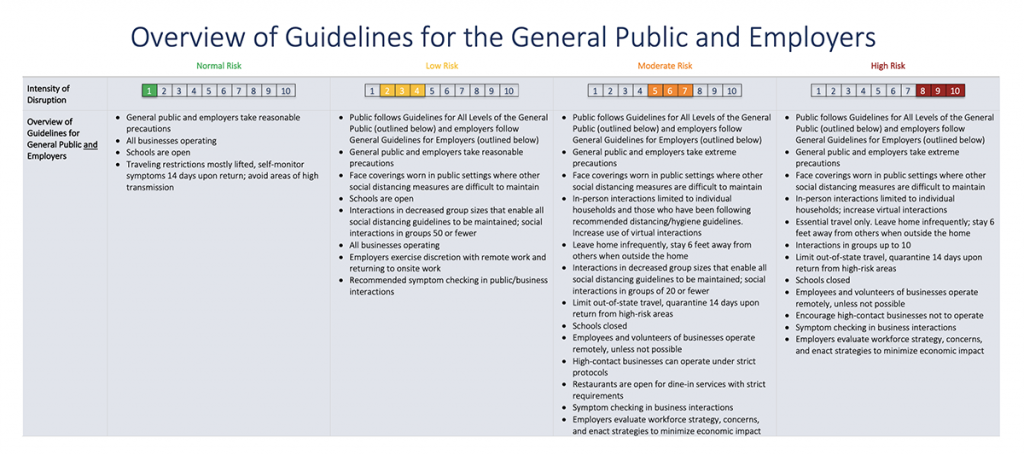UPDATE (August 14, 2020) – A recent public health order has changed references to “risk” to “restriction.” So in this blog post, references to “Moderate Risk” really mean “Moderate Restriction Level.”
(April 25, 2020) – Utah Governor Gary Herbert announced Friday the state’s plan to move from a high-risk phase to a moderate phase under the Utah Moves Together 2.0 plan. The plan, announced earlier this month is a detailed economic recovery plan and outlines ways in which businesses and the general public can start to phase back into life after pandemic.
“[There are] plans to change the risk category as soon as May 1,” Herbert said during his Friday news briefing. “We want people to be ready and anticipate that is going to happen.”
Under the Utah Moves Together 2.0 plan, phases are defined by colors. Herbert said the colors are intended to be a visual cue to help the public navigate the opportunities and possibilities each phase.

Simply put, red signifies is high risk and is the highest level of caution. Orange is a moderate risk category. Yellow means low risk. And green indicates a new normal of risk where individuals can move about with full activity, but with a new caution toward COVID-19. Each level contains precautions that that both businesses and the general public need to take.
“We’re about managing risk,” said Herbert. “There’s no belief that we can get to zero risk.”
Herbert recognized that the level of risk may be different depending on which part of the state people are in. He urged citizens to read the guidelines and become familiar with the recommendations of each colored phase.
There are several points that remain the same throughout all the phases:
- We need to be exceedingly careful for those in our vulnerable categories (over 60, underlying, health issues)
- We need a heightened level of common sense. People need to take personal responsibility for their own actions. The guidelines cannot account for every nuanced situation.
- We need to stay informed. Knowing the latest updates and being familiar with the Utah Leads Together 2.0 plan can help guide activity.
- We need to be vigilant with hygiene and cleaning.
- Wash your hands with soap for 20 seconds
- Use hand sanitizer when hand washing is not immediately possible
- Use masks in public
- Cover coughs and sneezes
- Clean high touch surfaces
- Avoid touching your face
- Avoid shaking hands
These state recommendations and guidelines will be put into place in conjunction with local health departments. Local health departments may recommend more strict guidelines in certain areas based on the assessed risk.
One of the most important things to keep in mind while moving from high risk to moderate risk is it does not mean business as usual. Under a moderate risk situation, there are more opportunities, but we still need to work together and all do our own part to make sure we continue trending in a good direction in the fight against COVID-19.

